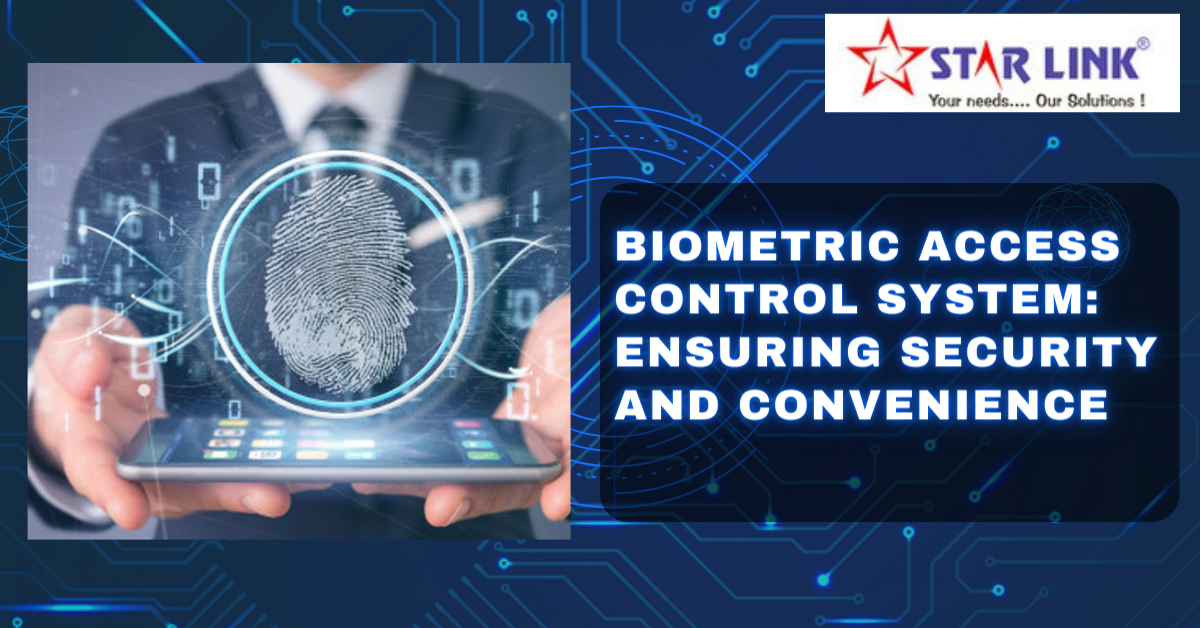In today’s rapidly evolving world, security has become a paramount concern for individuals and organisations alike. Traditional security measures such as passwords and key cards are no longer sufficient to protect sensitive areas and information. This is where Biometric Access Control Systems come into play. In this article, we will delve into the world of biometric access control, exploring what it is, how it works, its advantages, and its potential applications.
Understanding Biometric Access Control
1.What is Biometric Access Control?
Biometric access control is a cutting-edge security technology that utilizes unique biological traits to grant or deny access to a particular area or system. These biological traits include fingerprints, facial recognition, iris scans, voice recognition, and even DNA. Unlike traditional access methods, biometrics cannot be easily replicated or stolen, making them highly secure.
2. How Biometric Access Control Works
- The Enrollment Process – To implement a biometric access control system, individuals must first enroll their biometric data. For example, in the case of fingerprint recognition, the user’s fingerprint patterns are captured and stored securely in a database.
- Authentication Process – When a person attempts to access a secured area or system, the biometric system scans and compares the presented biometric data with the stored data. If there is a match, access is granted; if not, access is denied. This process is incredibly fast and highly accurate.
Advantages of Biometric Access Control
- Unparalleled Security – One of the most significant advantages of biometric access control is its unmatched security. Biometric data is unique to each individual, making it nearly impossible for unauthorized users to gain access.
2. Convenience and Efficiency – Biometric systems offer unparalleled convenience. Users no longer need to remember passwords or carry access cards; their biometric data is always with them. This streamlines access and reduces the risk of forgotten credentials.
3. Audit Trails – Biometric access control systems often include audit trail features, allowing organizations to monitor and track who has accessed specific areas or systems. This can be invaluable for security and accountability purposes.
Applications of Access Control System
Biometric Access Control Systems have a wide range of applications across various industries. Some notable examples include:
- Corporate Security
Many businesses use biometric access control to secure their offices and sensitive areas, ensuring that only authorized personnel can enter.
- Healthcare Facilities
Hospitals and clinics use biometrics to restrict access to patient records and controlled substances, safeguarding patient privacy and medication supplies.
- Government Institutions
Government buildings and agencies employ biometric systems to enhance security and protect classified information.
- Financial Institutions
Banks and financial institutions utilise biometric access control to safeguard customer data and secure vaults and cash handling areas.
The Future of Biometric Access Control
As technology continues to advance, biometric access control systems are becoming even more sophisticated. Facial recognition is becoming more prevalent, and research into biometric gait recognition and DNA-based access is ongoing. The future holds exciting possibilities for enhanced security and convenience.
Conclusion
In a world where security is of utmost importance, biometric access control systems offer a reliable and effective solution. Their ability to provide both security and convenience makes them a valuable asset for various industries. As technology advances, we can expect biometric access control to play an increasingly vital role in safeguarding our most sensitive areas and information.


